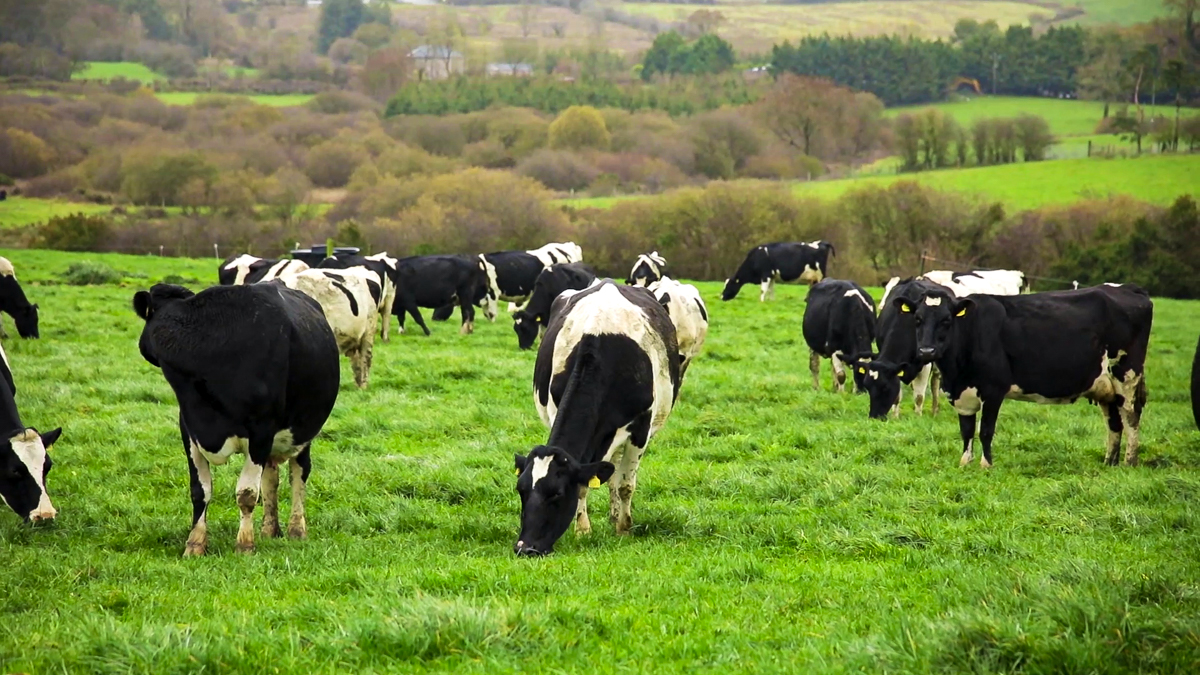If all milk globally was produced at an Irish standard, about 50 million dairy cows would be needed instead of the about 300 million cows at present worldwide, book author Aidan Connolly has said.
From a carbon perspective, more of the global milk production would be moved to Ireland and pulled out of less efficient countries, including India and Brazil, he said.
In The Future of Agriculture, Connolly presents a collection of essays on the factors impacting the evolution of food production, from robots and artificial intelligence to biotechnologies and alternative proteins.
Speaking to Agriland, the former Alltech chief innovation officer, however, stressed the importance of becoming more efficient and that Ireland’s current position “should not allow us to clap ourselves on the back”.
Stating that net zero is a challenge particularly for agriculture, Connolly said: “I think a lot of people feel as if we need to blame farmers, we need to blame food production, well guess what?
“The reason why we have these challenges is because we now have 8 billion people on the planet, and those 8 billion people are eating more of all types of food than ever before.”
Ireland, as a country which has signed up to some climate-change protocols, is making a bigger effort to reduce its carbon footprint than perhaps other countries, he said.
Emissions from dairy cows
There are methods to reduce the carbon footprint, part of which are digital technologies, and nutritional supplements, Connolly, who is also the president of investment firm AgriTech Capital, said.
While none of these are easy solutions, he said that the productivity of the average dairy cow in Ireland improves by 2.5% every year which, over years, will also reduce the carbon footprint by 30%.
“If you had a magic wand I think you would move a lot more cows to Ireland and move them out of places were they are not as efficient,” Connolly told Agriland.
In the Irish context, one of the biggest challenges is how methane-reducing feed supplements can be added to cows in a pasture-based system. “We don’t have an easy answer to that at the moment,” he said.

A lot of the digital technologies today work better when the cows are indoors where they can be observed to ensure better digestion, Connolly said.
Having cows lie down for longer, making sure that the cow is pregnant sooner, and fewer missed pregnancies from an insemination perspective are all parts that impact on the carbon footprint directly or indirectly, he said.
Milk consumption
Global milk consumption is at an all-time high and increased by an estimated 2% last year, according to the author of The Future of Agriculture.
When asked about how he would assess the potential of dairy-free milk, he said that even if people drink less fresh milk, they are still eating more dairy products such as yoghurt or cheese.
The use of milk protein in sports bars and special supplements continues to increase, Connolly, who expects that there will be more alternatives to milk and meat in the future, said.
While he believes milk consumption will continue to grow, in terms of meat, he said there is a generalised shift towards chicken and pork. “Beef is perhaps going to be more of a luxury, people will eat it but maybe not quite as frequently,” Connolly added.
Irish ag-tech
In terms of ag-tech, Ireland is in an “extraordinary position”, he said.
This is because a large number of people, many of which would have grown up on a farm, now work in tech companies, digital technology, and robotics.
“The idea that you have people who, or whose family, come from the land and are now working for a tech company creates an extraordinary opportunity for the country to grow start-ups that could solve some of the big issues in agriculture,” he said.
While the infrastructure for such ag-tech businesses in Ireland is quite good, Connolly said it could be better.
“The country has the ingredients to be successful particularly in fostering and developing ag-tech innovation,” he said.
